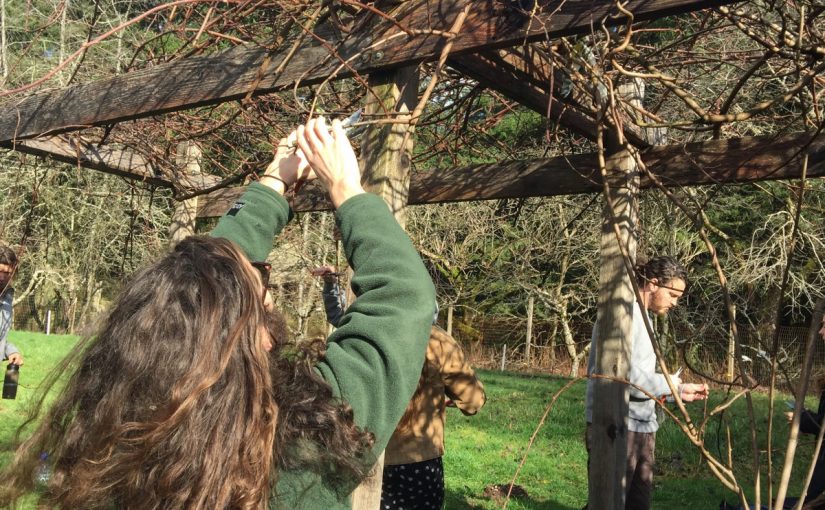Pruning an untamed hardy kiwi plant is quite the endeavor. The kiwis on the organic farm are beyond untamed, and in need of a heavy pruning. Almost all of the canes are tangled and should first all be trimmed down to the edges of the trellis to make for easier work later. The second step is to make sure the leaders of the female plants are spaced 8 to 12 inches apart on the cordon. This will allow for proper light penetration for improved photosynthesis as well as suitable airflow to suppress fungal growth. On the mature females up to 70 percent of the last year’s growth can and should be removed to promote new growth. The canes should be pruned down with a stub left at the base for new growth opportunity. With the level of disorder that currently faces the kiwis, the best thing for the future would be to heavily prune. The trees will produce less next year, however, over time the quality of the fruit will improve, and future pruning will be easier.
Because of the recent weather this year’s pruning had to stay minimal as to not shock the plant. The kiwis had not gone dormant, and leaked a significant amount of sap when cut. A good amount of detangling was needed to separate the plants so they wouldn’t strangle each other; it is important to keep the different plants independent of one another. One of the females was damaged in a past year, and needed very little pruning, mainly what was needed is for the cordons to regain vitality so they it could produce fruit. This female was pruned when the plant was not dormant, which almost killed it.
The male plants should be pruned mainly after flowering; the level of neatness in a male is not as crucial as that of a female. The males should be pruned to not tangle with the females, but produce as many flowers as possible for maximum pollination. Only minimal pruning should happen in dormancy.
The cordons of the kiwi should be replaced every 3 to 4 years to maintain health in the plants. If growing kiwis on a large scale this could be done in a rotation to not diminish yield. It is important that the cordons and leaders are trained to the trellis wire. This helps manage harvest and future pruning. The kiwis at the organic farm are not well trained. If dormancy occurs this year it would be a good idea to allow new cordons to grow, and properly train them in years to come.
